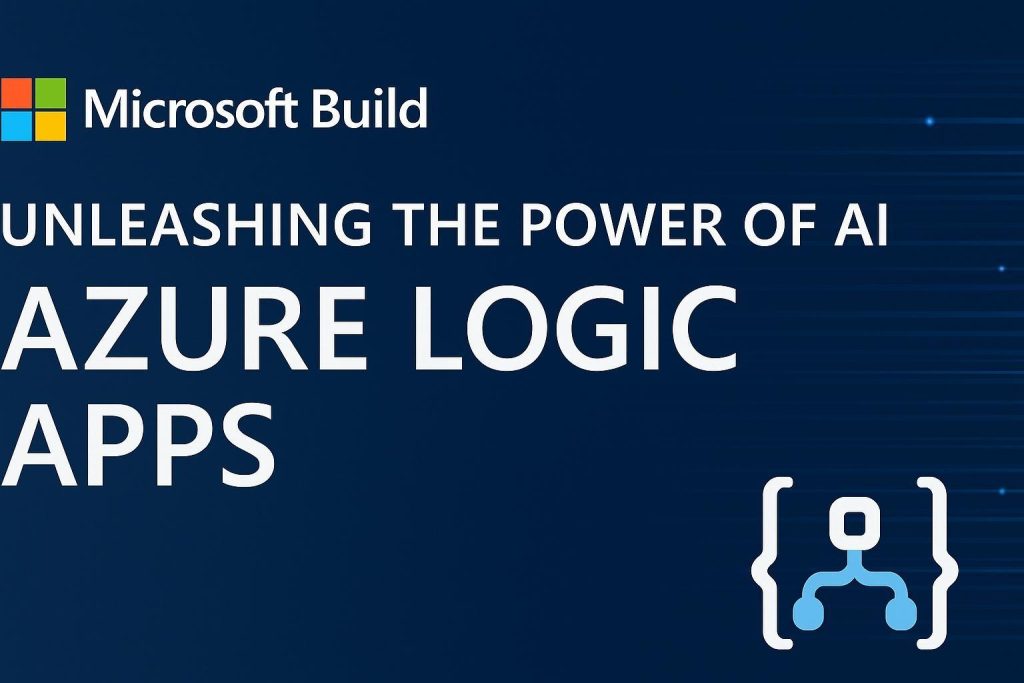The Microsoft Build 2025 conference has unleashed a wave of AI innovations, and one of the most exciting announcements is the evolution of Azure Logic Apps into a powerhouse for AI-driven automation. With new features like Agent Loop, deeper Azure AI Foundry integrations, and tools to build autonomous workflows, Microsoft is blurring the lines between traditional automation and adaptive AI agents.
As someone who’s passionate about the intersection of AI and workflow automation, I’ve been digging into these updates. Here’s a breakdown of what’s new, why it matters, and how you can leverage these tools to build smarter systems.
1. Agent Loop: AI Agents Inside Your Workflows
The star of the show is Agent Loop, a new capability in Azure Logic Apps that lets you embed AI agents directly into workflows. Unlike static workflows that follow rigid steps, Agent Loop enables dynamic decision-making by combining:
- Large Language Models (LLMs) (e.g., Azure OpenAI) for reasoning.
- Logic Apps connectors (1,400+) for real-world actions.
- Semantic Kernel for iterative planning and execution.
How It Works
Agent Loop operates in a think-act-learn cycle:
- Reasoning: The AI model evaluates the goal and context (e.g., “Process this loan application”).
- Action: It triggers a Logic Apps step (e.g., checks a CRM, validates credit score).
- Reflection: It learns from results and adjusts the plan dynamically 3.
Use Cases:
- A loan approval agent that auto-approves applications or escalates exceptions.
- A customer support bot that retrieves order details and processes returns.
- A multi-agent system where specialized agents collaborate (e.g., one drafts reports, another reviews them) 37.
Why this matters: Traditional workflows break when faced with unstructured data or ambiguous tasks. Agent Loop bridges this gap by letting AI handle complexity while Logic Apps ensures reliability and auditability.
2. Logic Apps + Azure AI Foundry: A Match Made in Automation Heaven
Microsoft is doubling down on Azure AI Foundry, its unified platform for building AI apps, and Logic Apps is now a first-class citizen in this ecosystem. Two key integrations stand out:
A. Logic Apps as Tools for AI Agents
You can now expose Logic Apps workflows as tools that AI agents can invoke. For example:
- An agent can use a Logic App to pull data from SAP, process it, and return insights.
- Prebuilt templates (e.g., “Send weather alerts via MSN Weather”) let you deploy agent-ready workflows in minutes 210.
Requirements:
- Use a Consumption plan Logic App.
- Start with a Request trigger and end with a Response action.
- Add a clear description so the agent understands the tool’s purpose 10.
B. Triggering Agents from Logic Apps
The new AI Agent Service connector lets Logic Apps kick off agents based on events—like a new file in SharePoint or a message in Service Bus. This enables event-driven AI automation:
- Example: A workflow detects a support ticket in Zendesk → triggers an agent to analyze and respond 2.
3. Why Build AI Agents in Logic Apps?
While you could build agents from scratch, Logic Apps offers unique advantages:
✅ Low-code + Pro-code flexibility: Visual designer for orchestration + support for C#, Python, and inline scripts.
✅ Enterprise-ready: Built-in governance, logging, and compliance (e.g., Entra ID integration).
✅ 1400+ connectors: Tap into services like Dynamics 365, Salesforce, or custom APIs.
✅ Human-in-the-loop: Easily add approval steps or manual overrides 37.
Microsoft’s vision is clear: Democratize AI agent development by leveraging the existing Logic Apps ecosystem.
4. What’s Coming Next?
Microsoft teased future updates, including:
- Multi-agent handoff: Agents passing tasks to each other like a relay race.
- Agent-to-Agent (A2A) protocol: Secure communication between agents across platforms.
- OBO Auth: Let agents act on behalf of users (e.g., accessing Outlook data with user consent) 3.
5. Getting Started
Ready to experiment? Here’s how:
- Try Agent Loop: Deploy a sample agent workflow using this guide.
- Integrate with AI Foundry: Follow this tutorial to connect Logic Apps to AI agents.
- Watch demos: Microsoft’s Agent Loop showcase highlights real-world use cases.
Final Thoughts
The agentic future is here, and Azure Logic Apps is positioning itself as the glue between AI reasoning and enterprise automation. Whether you’re automating customer service, financial processes, or IT ops, these tools let you build systems that adapt rather than just execute.
What excites me most is the collaboration potential—humans defining goals, AI handling the messy middle, and Logic Apps ensuring everything runs securely. I’m eager to see what the community builds with these tools!
What about you? Are you exploring AI agents in your workflows? Drop your thoughts in the comments!

